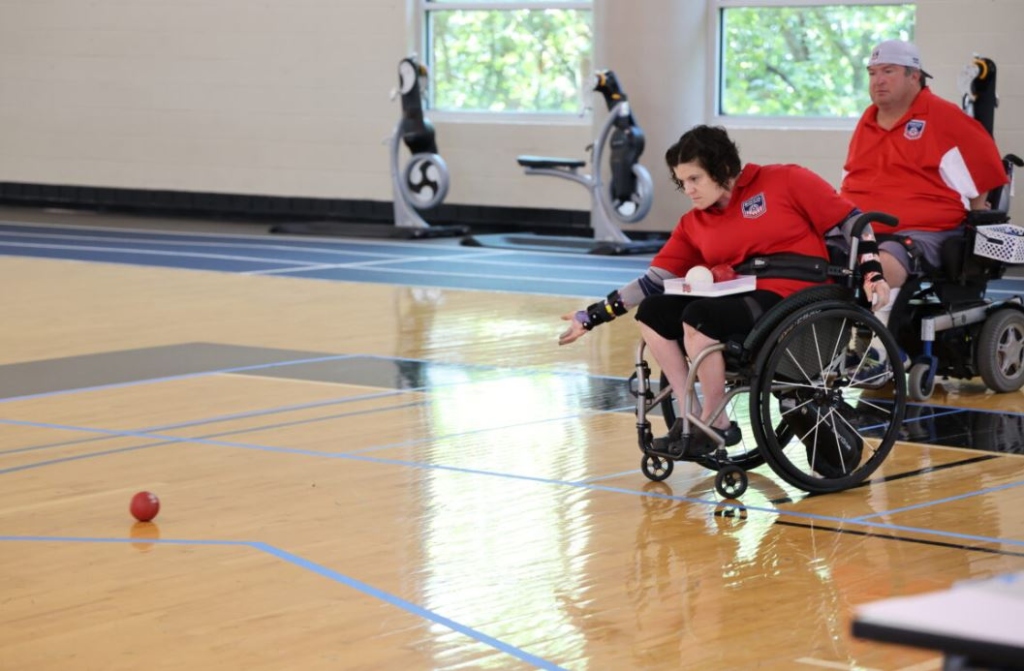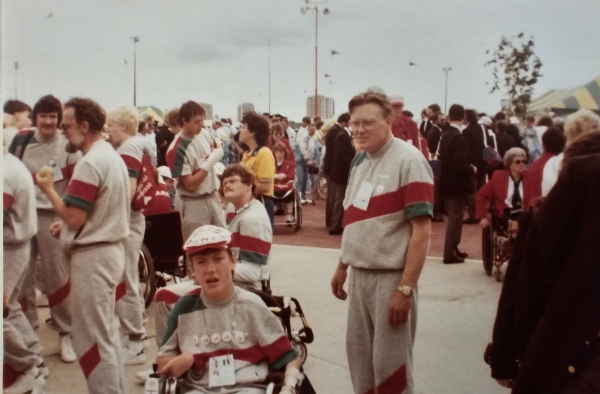By Graham Thomas
The foundations are being carefully put in place for the USA to host boccia at the 2028 Paralympic Games in Los Angeles, which is now less than three years away.
That was the assessment of World Boccia Operations manager Dom Tremblay after a recent visit to the United States where he was overseeing the training of officials for the Games.
But when it comes to the development of elite players, Tremblay believes it will take the USA another Paralympic cycle after LA 28 for the country to compete for places on the medal podium as they continue to chart a high-performance pathway.
“They are putting the building blocks in place and boccia in LA28 will be underpinned by a well organised structure,” he says.
“But as far as the hosts competing for medals, that’s perhaps not so realistic. I think their goal is to build momentum, so that the U.S. becomes a regular player in the global conversation by Brisbane 2032 and beyond.”
Two Structures, One Sport
The governance of boccia in the United States has long been fragmented. Today, two distinct entities operate: USA Boccia, which oversees community and grassroots participation, and Boccia United States, the new high-performance programme established two years ago under the wing of the U.S. Olympic & Paralympic Committee (USOPC).
Everything on the high-performance side is routed through the Lakeshore Foundation in Birmingham, Alabama — a facility Tremblay describs as “state of the art” and “comparable to the best Paralympic training centers in South Korea or São Paulo.”
The venue combines a rehabilitation hospital with elite training facilities: a 200-metre indoor track, multiple courts, a pool, dormitories, and fully accessible design features.
“This is a campus where nothing has been forgotten,” Tremblay says.
“From wheelchair-accessible showers to sports science labs, everything is built with high-performance athletes with disabilities in mind.”

The USA high-performance centre is based at the Lakeshore Foundation in Birmingham, Alabama.
A Pathway for US Athletes
The challenge is not infrastructure, but athletes. At this summer’s U.S. national championships, entries included six BC1s, 15 BC2s, 20 BC3s, and only three BC4s, alongside 39 participants ineligible for Paralympic classification.
“There are probably 10 to 15 clubs nationwide,” Tremblay notes.
“But a lot of the athletes come from veteran backgrounds, and many of those are not eligible for BC1 to BC4 classes.”
At present, the standout strength lies in BC4. The U.S. has one male athlete – Nick Taylor ranked in the world’s top 20 at No.17 – and a promising female competitor, 29th world ranked Cassie Mitchell, in the same class. (Both are pictured above).
Plans are also underway to field a BC3 pair in LA 28, though depth across BC1 to BC3 remains limited.
“They might get one or two individuals who can compete internationally over the next three years,” Tremblay explained.
“But the field in boccia is very deep. You don’t just appear and win medals. It took France two full cycles before they reached the podium, and even then, people were surprised.”
Hosting Pathway: Birmingham 2027 as the Test
The most immediate target for U.S. boccia is the World Boccia Challenger scheduled for Birmingham in June 2027.
This will be the first world-level boccia event hosted in the country since 2017.
Tremblay’s visit focused on preparing volunteers and officials for the challenge of the Challenger – and he is confident they will meet it.
“The main goal is to train their national technical officials — timers, liners, scorers,” he says.
“They are also planning to certify two or three more international referees in the next one to two years. Birmingham will be a chance to stress-test systems and show they can deliver.”
If successful, the Challenger will act as a springboard for a potential World Cup event in 2028.
With both events in place, the U.S. would then have the operational experience needed when LA 2028 arrives.
LA 28: Automatic Spots, Limited Expectations
As host nation, the U.S. will receive guaranteed quota slots in the Teams competition, plus BC3/BC4 Pairs, provided those entries appear in the world rankings by the end of 2027.
That means seven athletes are essentially assured of Paralympic participation. Beyond that, additional qualifications appear a tough hurdle.
“I probably don’t see them qualifying more athletes,” Tremblay admits.
“Unless someone suddenly emerges, the focus will be on those seven. They’ll concentrate on naming them by 2026 or 2027 so they have two years to prepare together.”
Medals, however, remain a distant prospect.
“The U.S. will win their Paralympic medals in athletics, swimming, and team sports. In boccia, it’s going to be tricky. The timeline is too short,” Tremblay says.

The USA high-performance centre is based at the Lakeshore Foundation in Birmingham, Alabama.
Lessons from Abroad
The U.S. is far from the first nation to use a home Games to reboot boccia.
France’s Paralympic BC1 gold medal in Paris for Aurélie Aubert produced a 22% surge in registrations, while Indonesia leveraged the 2018 Asian Para Games in Jakarta to build a world-class BC1/BC2 program from virtually nothing.
“Indonesia had absolutely no boccia before 2018,” saysTremblay.
“Now they compete with Thailand for podium places. That’s the model for the U.S – to use LA 2028 as the catalyst, not the end goal.”
Looking Beyond LA
Tremblay is clear-eyed about what success should look like in 2028: visibility, credibility, and growth.
“Yes, they would like to have a medal,” he said. “But the main goal is to use LA to build a base for boccia. Then, when we get to Brisbane, the United States can be part of the discussion as a real high-performance nation.”
With world-class facilities at Lakeshore, committed institutional backing from the USOPC, and hosting rights that guarantee exposure, the pieces are in place.
The question is whether American boccia can translate those assets into athlete development and elite players rubbing shoulders with Korean, Portuguese, Hong Kong Chinese, Chinese, Indonesian, British, Brazilian, Thai, Slovak, Colombian athletes and others chasing medals at the top of the rankings.
As Tremblay put it: “They have the infrastructure. They have the support.
“Now, let’s see if they can take advantage and show that on the athlete side, too. That will be the hardest part.”
TIMELINE
2008 – Last U.S. boccia athlete competes at the Paralympic Games (Beijing).
2017 – Kansas City hosts the BISFed Americas Regional Open, the most recent world-level boccia event in the U.S.
2021 – Boccia United States established as the official high-performance arm under the U.S. Olympic & Paralympic Committee.
2026 (June) – Birmingham, Alabama set to host a World Boccia Challenger.
➡ First international event in nearly a decade.
➡ Will train and test new U.S. referees, technical officials, and volunteers.
2027 (Proposed) – U.S. considering a bid to host a World Boccia World Cup as a dress rehearsal for LA 2028.
2028 – Los Angeles Paralympic Games
➡ U.S. guaranteed entries in Team, BC3 Pair, and BC4 Pair.
➡ At least seven athletes will compete — the country’s biggest Paralympic boccia delegation in 20 years.
2032 – Target: Become a genuine medal contender at the Brisbane Paralympics.


